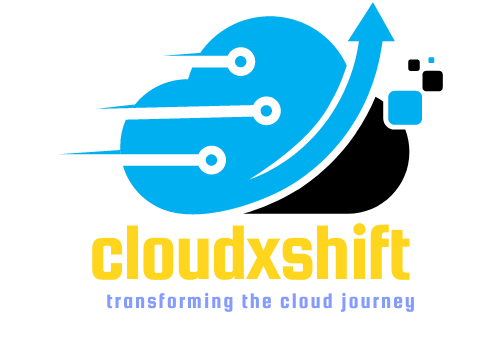Cloud Migration: Advantages and Challenges
Introduction
Advantages of Cloud Migration
Challenges of Cloud Migration
Strategies for Overcoming Cloud Migration Challenges
Conclusion
Introduction
Cloud migration refers to the process of moving an organization’s data, applications, and other business components from on-premises infrastructure to a cloud-based environment. Cloud migration is becoming increasingly popular among businesses due to its ability to offer enhanced security, scalability, and cost efficiency. However, the process of migrating to the cloud can be challenging and complex, requiring careful planning and execution to avoid potential issues.
Organizations that migrate to the cloud can benefit from improved scalability and flexibility, increased cost-efficiency and savings, enhanced security and compliance, greater accessibility and collaboration, and improved disaster recovery and business continuity. However, the process of cloud migration can present a range of challenges, including data security and privacy concerns, technical challenges such as integration and interoperability, cost and complexity of migration, lack of expertise and knowledge, and regulatory and compliance issues.
Advantages of Cloud Migration
Improved Scalability and Flexibility: Cloud computing offers a high level of scalability and flexibility, allowing organizations to easily scale up or down based on their changing needs. This means organizations can quickly and easily adjust their computing resources to meet demand, without having to invest in additional hardware or software.
Increased Cost-Efficiency and Savings: Migrating to the cloud can result in significant cost savings, as organizations can avoid the upfront costs of hardware and software, reduce IT maintenance costs, and pay only for the computing resources they need.
Enhanced Security and Compliance: Cloud providers offer a high level of security and compliance, with features such as data encryption, access controls, and regular security updates. This means organizations can benefit from enhanced security measures without having to invest in costly infrastructure.
Greater Accessibility and Collaboration: Cloud-based systems offer greater accessibility and collaboration, allowing employees to work from anywhere and collaborate in real-time. This can lead to increased productivity and better collaboration between teams.
Improved Disaster Recovery and Business Continuity: Cloud-based systems offer improved disaster recovery and business continuity capabilities, with data backups and failover systems that can quickly recover data in the event of an outage or disaster.
Challenges of Cloud Migration:
Data Security and Privacy Concerns: Migrating to the cloud requires organizations to entrust their sensitive data to a third-party provider, which can raise concerns around data security and privacy. To mitigate these risks, organizations should carefully evaluate their cloud providers’ security and compliance policies, and consider implementing additional security measures such as data encryption and access controls.
Technical Challenges, such as Integration and Interoperability: Migrating to the cloud can present technical challenges, such as integrating existing applications and systems with cloud-based infrastructure. To address these challenges, organizations should carefully plan and execute their migration, and consider partnering with experienced vendors and service providers.
Cost and Complexity of Migration: Migrating to the cloud can be complex and expensive, requiring careful planning and execution. Organizations should carefully evaluate the costs and benefits of cloud migration, and consider partnering with vendors and service providers who can offer expertise and support.
Lack of Expertise and Knowledge: Migrating to the cloud requires a high level of expertise and knowledge, which can be a challenge for organizations without dedicated IT resources. To address this challenge, organizations can invest in training and education for their staff, and consider partnering with experienced vendors and service providers.
Regulatory and Compliance Issues: Migrating to the cloud can present regulatory and compliance challenges, as organizations must comply with a range of regulations and standards. To address these challenges, organizations should carefully evaluate their cloud providers’ compliance policies and consider implementing additional compliance measures.
Strategies for Overcoming Cloud Migration Challenges
Proper Planning and Execution of Migration: Organizations should carefully plan and execute their migration to the cloud, taking into account the specific needs and challenges of their business. This includes conducting a thorough analysis of their current infrastructure and applications, identifying the most suitable cloud provider and deployment model, and developing a migration strategy that minimizes downtime and disruptions.
Ensuring Data Security and Compliance: To mitigate data security and compliance risks, organizations should carefully evaluate their cloud provider’s security and compliance policies and implement additional security measures such as data encryption, access controls, and monitoring. Organizations should also establish clear policies and procedures for data management and access, and regularly review and update these policies to ensure compliance with regulations and standards.
Training and Educating Staff: Migrating to the cloud requires a high level of expertise and knowledge, and organizations must ensure that their staff has the necessary skills and knowledge to manage and operate cloud-based systems. To address this challenge, organizations can invest in training and education programs for their staff, and provide ongoing support and guidance to ensure a smooth transition to the cloud.
Partnering with Trusted Vendors and Service Providers: To address technical and expertise challenges, organizations can partner with experienced vendors and service providers who can offer expertise and support throughout the migration process. These vendors can provide guidance on selecting the right cloud provider and deployment model, developing a migration strategy, and implementing security and compliance measures.
Continuously Monitoring and Optimizing Cloud Infrastructure: Once the migration is complete, organizations should continuously monitor and optimize their cloud infrastructure to ensure optimal performance, security, and cost efficiency. This includes monitoring system performance and resource utilization, identifying and addressing potential security threats, and regularly reviewing and optimizing cloud costs.
Conclusion
Cloud migration offers a range of benefits to organizations, including improved scalability, cost-efficiency, security, and accessibility. However, the migration process can also present a range of challenges, including data security and privacy concerns, technical challenges, and regulatory and compliance issues. By carefully planning and executing their migration, and implementing strategies to mitigate these challenges, organizations can successfully migrate to the cloud and realize the benefits of cloud computing.





2 Comments
Praveen Rana
This is a test comment
Praveen Rana
Test comment2